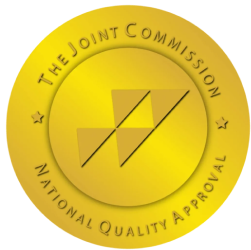Dimethyltryptamine, commonly referred to as DMT, is a potent hallucinogenic compound found naturally in some plants and animals. Often associated with spiritual and transcendental experiences, it’s a key component in ayahuasca, a traditional brew used in South American shamanic rituals. In recent years, its popularity as a recreational drug has grown due to its intense and short-lived psychedelic effects.
Understanding how long DMT stays in your system is crucial for both medical and practical reasons. For individuals who have used DMT, knowledge of its metabolism, detection times, and potential effects can guide informed decisions about their health and well-being.
DMT has a unique profile compared to other hallucinogens. When ingested, its effects depend heavily on the method of administration, whether inhaled, ingested (with an MAOI inhibitor like ayahuasca), or injected.
DMT is primarily metabolized by the liver through the enzyme monoamine oxidase (MAO). This process breaks DMT down into inactive metabolites, including indoleacetic acid, which is then excreted.
Detection windows vary depending on the type of test used. Although standard drug screenings rarely include DMT, advanced or specialized testing might detect it.
Urine Testing
DMT is typically undetectable in urine within 24–48 hours after use. However, for individuals consuming ayahuasca, metabolites may be detectable slightly longer due to the brew’s complexity.
Blood Testing
DMT has a very short half-life, approximately 15–30 minutes in the bloodstream. As such, it’s usually undetectable after 2–4 hours post-use.
Saliva Testing
There is limited research on saliva testing for DMT, but it is unlikely to remain detectable for more than a few hours after use.
Hair Testing
DMT metabolites may be incorporated into hair follicles, where they can remain detectable for up to 90 days. However, hair testing for DMT is extremely uncommon.
Urine testing is the most accessible form of drug screening, but DMT presents challenges due to its rapid metabolism and clearance.
Smoking DMT and Urine Detection
Smoking leads to rapid absorption and excretion, with DMT typically leaving the system within 24–48 hours. Urinary detection depends on hydration levels, frequency of use, and metabolic rate.
Ayahuasca and Urine Detection
The complex mixture of ayahuasca may prolong the presence of DMT-related compounds in the urine. These compounds could linger for 48–72 hours, especially in heavy or repeated use.
Comparison with Other Methods
Smoking results in quicker clearance compared to oral consumption. However, repeated or high doses, regardless of method, may slightly extend the detection window.
Several factors determine how long DMT remains in the system, including:
Most standard drug tests, including workplace panels, do not screen for DMT. However, there are exceptions:
While DMT is not physically addictive, frequent use can lead to psychological dependence or other risks. Understanding its metabolism and detection can empower individuals to make informed decisions about their health. If you or someone you know struggles with substance use, reaching out for professional support can be a critical step toward well-being.
Call Asana Recovery today, we can help you stop abusing DMT. Our programs help you rewire your brain, realizing that the need for to abuse substances stems from deeper psychological issues that must be resolved in order to fully recover. Call today!

This book has helped so many men and women; and we want to give it you for FREE. Get signed up today and discover how to unlock the grip of addiction and get back to living your best life.
In this book, you’ll discover…
— The Most Common Misconceptions About Addiction and Rehab
— Why Rock Bottom is a Myth and What You Can Do About It
–The Steps to Healing From Trauma, Both Mentally and Emotionally
–And much more!

Asana Recovery is licensed and certified by the State Department of Health Care Services.


© Copyright 2024 Asana Recovery™ | All Rights Reserved | Privacy Policy
Asana Recovery
We firmly believe that the internet should be available and accessible to anyone, and are committed to providing a website that is accessible to the widest possible audience, regardless of circumstance and ability.
To fulfill this, we aim to adhere as strictly as possible to the World Wide Web Consortium’s (W3C) Web Content Accessibility Guidelines 2.1 (WCAG 2.1) at the AA level. These guidelines explain how to make web content accessible to people with a wide array of disabilities. Complying with those guidelines helps us ensure that the website is accessible to all people: blind people, people with motor impairments, visual impairment, cognitive disabilities, and more.
This website utilizes various technologies that are meant to make it as accessible as possible at all times. We utilize an accessibility interface that allows persons with specific disabilities to adjust the website’s UI (user interface) and design it to their personal needs.
Additionally, the website utilizes an AI-based application that runs in the background and optimizes its accessibility level constantly. This application remediates the website’s HTML, adapts Its functionality and behavior for screen-readers used by the blind users, and for keyboard functions used by individuals with motor impairments.
If you’ve found a malfunction or have ideas for improvement, we’ll be happy to hear from you. You can reach out to the website’s operators by using the following email
Our website implements the ARIA attributes (Accessible Rich Internet Applications) technique, alongside various different behavioral changes, to ensure blind users visiting with screen-readers are able to read, comprehend, and enjoy the website’s functions. As soon as a user with a screen-reader enters your site, they immediately receive a prompt to enter the Screen-Reader Profile so they can browse and operate your site effectively. Here’s how our website covers some of the most important screen-reader requirements, alongside console screenshots of code examples:
Screen-reader optimization: we run a background process that learns the website’s components from top to bottom, to ensure ongoing compliance even when updating the website. In this process, we provide screen-readers with meaningful data using the ARIA set of attributes. For example, we provide accurate form labels; descriptions for actionable icons (social media icons, search icons, cart icons, etc.); validation guidance for form inputs; element roles such as buttons, menus, modal dialogues (popups), and others. Additionally, the background process scans all the website’s images and provides an accurate and meaningful image-object-recognition-based description as an ALT (alternate text) tag for images that are not described. It will also extract texts that are embedded within the image, using an OCR (optical character recognition) technology. To turn on screen-reader adjustments at any time, users need only to press the Alt+1 keyboard combination. Screen-reader users also get automatic announcements to turn the Screen-reader mode on as soon as they enter the website.
These adjustments are compatible with all popular screen readers, including JAWS and NVDA.
Keyboard navigation optimization: The background process also adjusts the website’s HTML, and adds various behaviors using JavaScript code to make the website operable by the keyboard. This includes the ability to navigate the website using the Tab and Shift+Tab keys, operate dropdowns with the arrow keys, close them with Esc, trigger buttons and links using the Enter key, navigate between radio and checkbox elements using the arrow keys, and fill them in with the Spacebar or Enter key.Additionally, keyboard users will find quick-navigation and content-skip menus, available at any time by clicking Alt+1, or as the first elements of the site while navigating with the keyboard. The background process also handles triggered popups by moving the keyboard focus towards them as soon as they appear, and not allow the focus drift outside it.
Users can also use shortcuts such as “M” (menus), “H” (headings), “F” (forms), “B” (buttons), and “G” (graphics) to jump to specific elements.
We aim to support the widest array of browsers and assistive technologies as possible, so our users can choose the best fitting tools for them, with as few limitations as possible. Therefore, we have worked very hard to be able to support all major systems that comprise over 95% of the user market share including Google Chrome, Mozilla Firefox, Apple Safari, Opera and Microsoft Edge, JAWS and NVDA (screen readers).
Despite our very best efforts to allow anybody to adjust the website to their needs. There may still be pages or sections that are not fully accessible, are in the process of becoming accessible, or are lacking an adequate technological solution to make them accessible. Still, we are continually improving our accessibility, adding, updating and improving its options and features, and developing and adopting new technologies. All this is meant to reach the optimal level of accessibility, following technological advancements. For any assistance, please reach out to